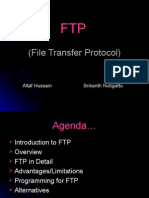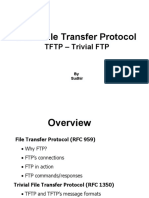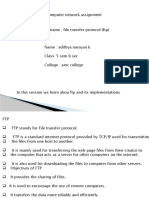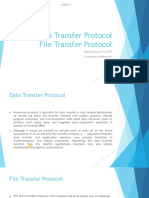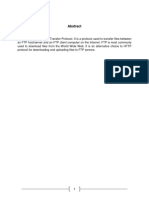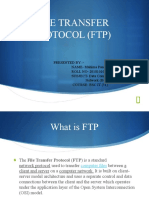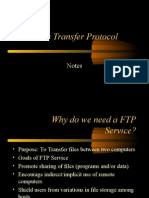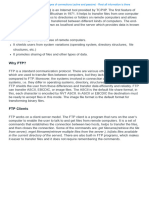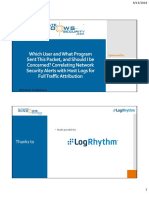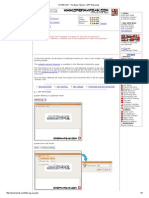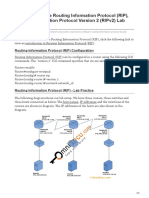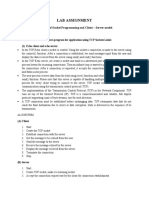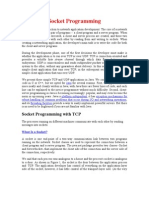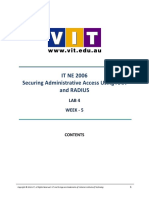0% found this document useful (0 votes)
93 views29 pagesDevelopment of FTP Server
This document provides an overview of the File Transfer Protocol (FTP) including its development, components, connection modes, commands, data transfer modes, advantages/limitations, and programming with FTP in Java. FTP uses TCP to transfer files between computers over IP networks, with a client connecting to an FTP server on port 21 for control commands and port 20 by default for data transfers. It describes the client-server model, common commands like RETR and STOR, and alternatives like SFTP that provide additional security.
Uploaded by
amansyahCopyright
© Attribution Non-Commercial (BY-NC)
We take content rights seriously. If you suspect this is your content, claim it here.
Available Formats
Download as PPT, PDF, TXT or read online on Scribd
0% found this document useful (0 votes)
93 views29 pagesDevelopment of FTP Server
This document provides an overview of the File Transfer Protocol (FTP) including its development, components, connection modes, commands, data transfer modes, advantages/limitations, and programming with FTP in Java. FTP uses TCP to transfer files between computers over IP networks, with a client connecting to an FTP server on port 21 for control commands and port 20 by default for data transfers. It describes the client-server model, common commands like RETR and STOR, and alternatives like SFTP that provide additional security.
Uploaded by
amansyahCopyright
© Attribution Non-Commercial (BY-NC)
We take content rights seriously. If you suspect this is your content, claim it here.
Available Formats
Download as PPT, PDF, TXT or read online on Scribd
/ 29
